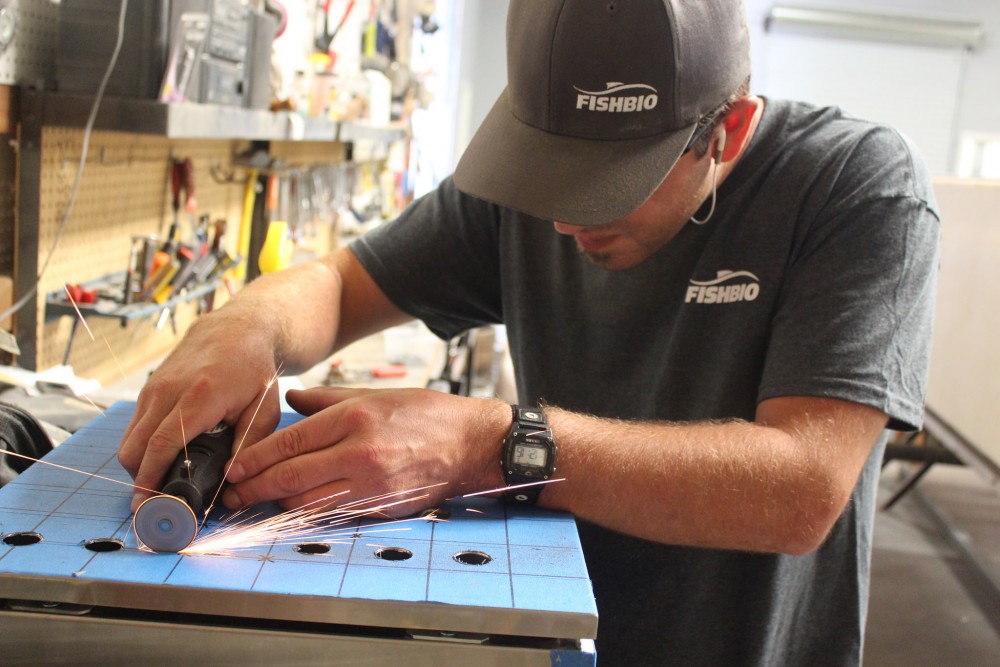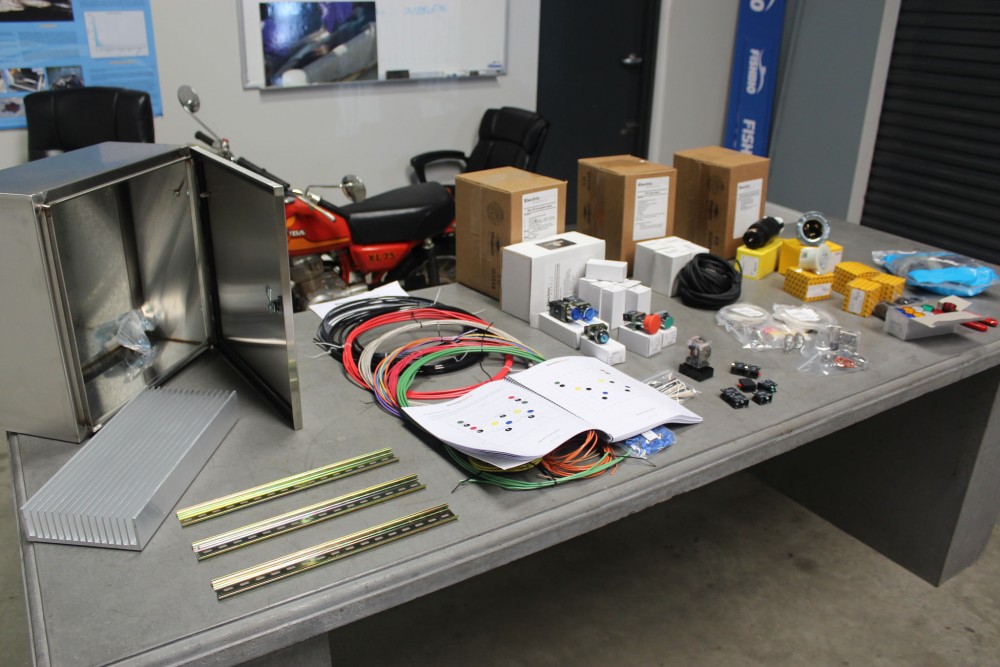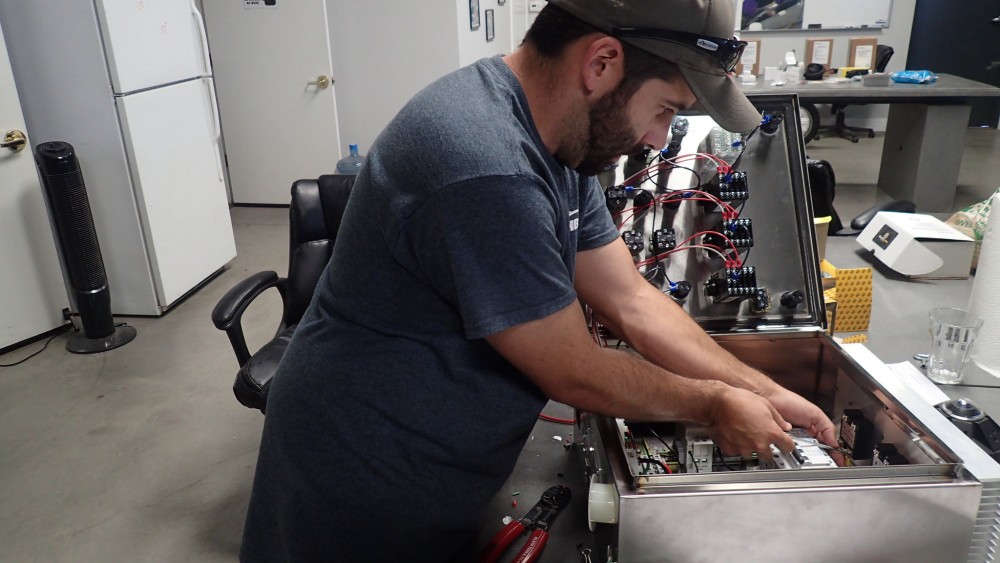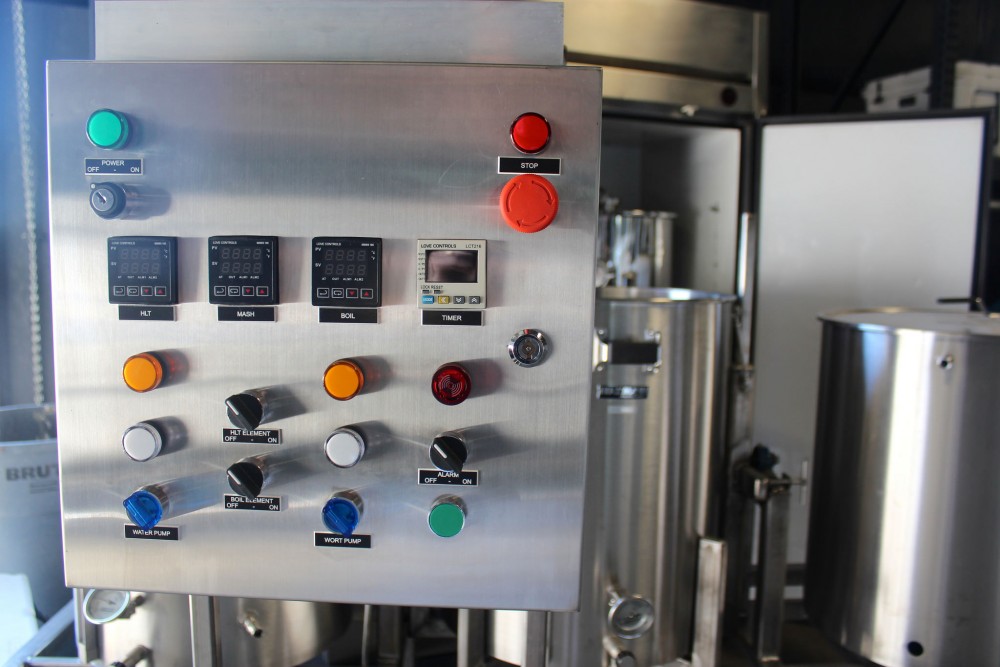Wednesday November 4, 2015
 If you’ve been following our blog, you know some of us at FISHBIO have been brewing craft beer as a hobby for a number of years, and all of us enjoy drinking the beer we brew. As with most home brewers, we started out using kits that include malt extract, a sugary molasses-like substance, which when added to boiling water forms wort, the foundation of what will become beer. Whether you desire to make the freshest beer possible or design your own recipes, the next step in advancing brewing ability is All-Grain-Brewing (AGB). AGB eliminates the use of malt extracts and gives the brewer full control of the amount and variety of grains utilized.
If you’ve been following our blog, you know some of us at FISHBIO have been brewing craft beer as a hobby for a number of years, and all of us enjoy drinking the beer we brew. As with most home brewers, we started out using kits that include malt extract, a sugary molasses-like substance, which when added to boiling water forms wort, the foundation of what will become beer. Whether you desire to make the freshest beer possible or design your own recipes, the next step in advancing brewing ability is All-Grain-Brewing (AGB). AGB eliminates the use of malt extracts and gives the brewer full control of the amount and variety of grains utilized.
 We’ve been AGB for the past year with great success, but we wanted to improve our control of temperature during the brew process, and also have the ability to brew indoors – especially during those chilly winter months. Until now, we have been heating our hot liquor tank and brew kettle with direct-fire propane burners, but recently decided to build an electric brewing system. Electric brewing gives precise control of temperature, and can even make it possible to automate parts of the brewing process.
We’ve been AGB for the past year with great success, but we wanted to improve our control of temperature during the brew process, and also have the ability to brew indoors – especially during those chilly winter months. Until now, we have been heating our hot liquor tank and brew kettle with direct-fire propane burners, but recently decided to build an electric brewing system. Electric brewing gives precise control of temperature, and can even make it possible to automate parts of the brewing process.
To really understand how the electric system operates, we decide to build the control panel, heating elements, and wiring for our new setup ourselves. This decision turned out to be quite an undertaking, and probably isn’t something to try at home unless you have some fabrication skills and a good understanding of electrical circuitry. We ordered the control panel as a kit that included a stainless steel enclosure, switches, buttons, relays, lights, temperature controllers, timers, probes, plugs and wiring.
 To heat the water in the hot liquor tank and brew pot, we installed low-density heating elements in each of these vessels. The heating element is similar to that inside an electric hot water heater found in many homes. On the outside of the brewing vessel, the heating element is wired to a cord that plugs into the control panel and supplies 220 volts of electricity. The most essential component of an electric brewery is the control panel: it gives the ability to set minimum and maximum temperatures for each of the heating elements, and you can set a timer to alert you to when the temperature needs to be adjusted.
To heat the water in the hot liquor tank and brew pot, we installed low-density heating elements in each of these vessels. The heating element is similar to that inside an electric hot water heater found in many homes. On the outside of the brewing vessel, the heating element is wired to a cord that plugs into the control panel and supplies 220 volts of electricity. The most essential component of an electric brewery is the control panel: it gives the ability to set minimum and maximum temperatures for each of the heating elements, and you can set a timer to alert you to when the temperature needs to be adjusted.
 To build the control panel, we started by laying out where we wanted all the switches, lights, and alarms to be mounted within the control panel door. Then we carefully drilled, cut, and filed each of the openings, and mounted each item in its corresponding opening. Following the wiring schematics provided with the kit, we carefully cut, soldered, and connected more than 100 segments of wire. Despite some mishaps in the wiring due to errors in the manual, and thanks to the input of friends with a greater understanding of electrical circuitry than our own, we were able to troubleshoot the errors, and we are now ready to test our electric-powered brew system. Our biggest challenge now is deciding what kind of beer to brew: perhaps a nice balanced pale ale or an extra hopped IPA. We will continue to give you updates on what’s brewing as we make additional improvements to our system. Cheers!
To build the control panel, we started by laying out where we wanted all the switches, lights, and alarms to be mounted within the control panel door. Then we carefully drilled, cut, and filed each of the openings, and mounted each item in its corresponding opening. Following the wiring schematics provided with the kit, we carefully cut, soldered, and connected more than 100 segments of wire. Despite some mishaps in the wiring due to errors in the manual, and thanks to the input of friends with a greater understanding of electrical circuitry than our own, we were able to troubleshoot the errors, and we are now ready to test our electric-powered brew system. Our biggest challenge now is deciding what kind of beer to brew: perhaps a nice balanced pale ale or an extra hopped IPA. We will continue to give you updates on what’s brewing as we make additional improvements to our system. Cheers!
